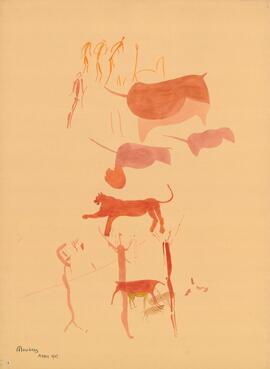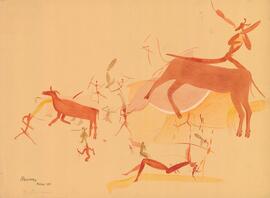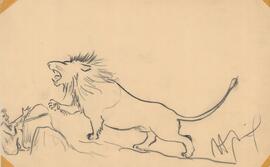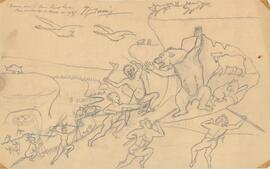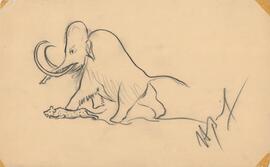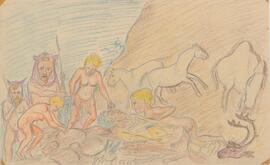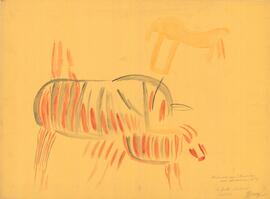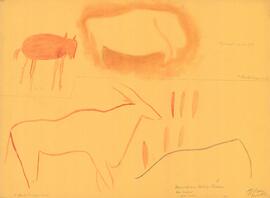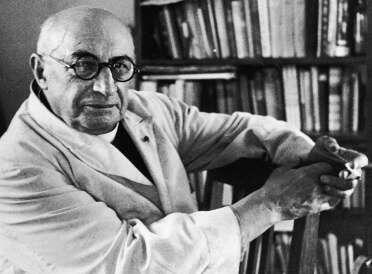Identity area
Reference code
Title
Date(s)
Level of description
Extent and medium
Context area
Name of creator
Biographical history
Nationality: France
Created by: willem
Created on: 23/05/2003
Amended by: dlw
Amended on: 20/03/2006
Name of creator
Biographical history
Background of the Recorder
The Rock Art Research Institute had its small beginnings in 1979 when Professor David Lewis-Williams moved from the Social Anthropology Department at the University of the Witwatersrand to the Archaeology Department. A few years later, in 1983, he started a research project focused on surveying and recording the rock art of the Harrismith district, South Africa. This project was headed by Professor Lewis-Williams, with Bruce Fordyce as the only other researcher, and was funded by the Human Sciences Research Council (HSRC). This project grew and the necessity for interpretation of the rock art, not just finding the rock art sites, became a primary focus. In 1986 the entity became more widely recognized and, through a series of successful projects, achieved Unit status becoming the Rock Art Research Unit (RARU), with Professor Lewis-Williams as the director of the Unit. The HSRC still funded the Unit, and additional funding came from the Centre for Science Development, as well as from Wits University. Some of the people employed (full or part time, or as research students) by RARU are Terence Kohler (1984), Conrad Steenkamp (1984), Paul den Hoed (1984-1985), Zachary Kingdon (1986-1987), Colin Campbell (1987-1988), Thomas Dowson (1988-1994), Anne Holliday (1989-1995), Geoff Blundell (from 1993), Sven Ouzman (from 1993). In 2000, with the Professor Lewis-Williams's imminent retirement, Professor Barry Mendelow, then the Deputy Vice Chancellor, suggested that the Unit be ungraded to an institute. A unit is closed if the director leaves, but an institute can continue under different directorship. Institute status is the highest research status conferred by Wits University, and it was awarded to the Unit to recognise the high level of achievement in research publications and the breadth of research talent built up during Professor Lewis-Williams's twenty-one year directorship. Today the Rock Art Research Institute (RARI) is funded by the National Research Foundation, Wits University's own Research Fund and the Anglo-American Chairman's Fund. Some activities have been and are privately resourced. Dr Benjamin Smith became the new director of the Institute after Professor Lewis-Williams. He is still the director today. RARI is dedicated to developing an understanding of rock art by researching indigenous beliefs, rituals, customs and lifeways. Research is currently underway in all South African provinces as well as in Zimbabwe, Swaziland, Lesotho, Botswana, Mozambique, Zambia, Malawi, Tanzania and Kenya. Research therefore includes the rock arts of San and Pygmy hunter-gatherers, Khoi and Nilotic pastoralists, as well as of African farmers, such as the Chewa and the Northern Sotho. Underpinning this diverse research is a focus on the complex symbolism of African image-making. RARI has become one of the largest specialist rock art institutions in the world, attracting students and researchers from around the world. It is a leading centre for rock art training and offers undergraduate and post-graduate courses in rock art recording, interpretation and management. It is also active in rock art conservation and in the development and management of rock art tourism in South Africa. Included in these initiatives is the establishment of the Origins Centre in 2006 (www.origins.org.za), a world-class museum facility located in Johannesburg on the Wits University campus.
Repository
Archival history
Immediate source of acquisition or transfer
Content and structure area
Scope and content
Appraisal, destruction and scheduling
Accruals
System of arrangement
Conditions of access and use area
Conditions governing access
Conditions governing reproduction
Language of material
- English
Script of material
- Latin
Language and script notes
Physical characteristics and technical requirements
Finding aids
Allied materials area
Existence and location of originals
Existence and location of copies
Related units of description
Notes area
Note
In 1929 the Prime Minister, General Hertzog invited Breuil to South Africa. Breuil sailed to South Africa visiting part of Bechuanaland (Botswana), Orange Free State, Basutoland (Lesotho), Transvaal, Southern Rhodesia (Zimbabwe) and the Victoria Falls.
Breuil's return visit to South Africa in October 1942 came at the request of Van Riet Lowe. He occupied the post of associate visiting professor at the University of Witwatersrand and researcher with the Archaeology Survey, Department of Education. During his 32-month stay, Breuil visited the Orange Free State, mountains of Lesotho, Mozambique, Cape Town, Port Elizabeth and the valley of the Vaal. His research included the study of raised beaches, the succession of industries in river valleys and the reproductions of rock paintings.
Breuil was captivated by the rock art in southern Africa. On his next visit in 1947, Breuil toured southern Africa over a period of 2 years. He visited Zambia, Zimbabwe, the Belgian Congo, Angola and Namibia. But his focus was primarily on Brandberg and the White Lady. Breuil spent weeks in the harsh African sun sketching and tracing this rock painting.
Breuil's research into this particular rock painting became a rather controversial aspect of his career. Breuil insisted that an ancient tribe of Europeans that once inhabited Africa painted the art. However the archaeological community finally threw out this interpretation in 1956 as a 'highly romanticised' explanation. Breuil's last visit to southern Africa came in 1951. The then frail 74-year-old found great difficulty in returning to his beloved White Lady shelter in the Brandberg. Sadly he was unable to climb the mountain to the shelter.
On 14 August 1961 Abbè Henri Breuil died at his home.

